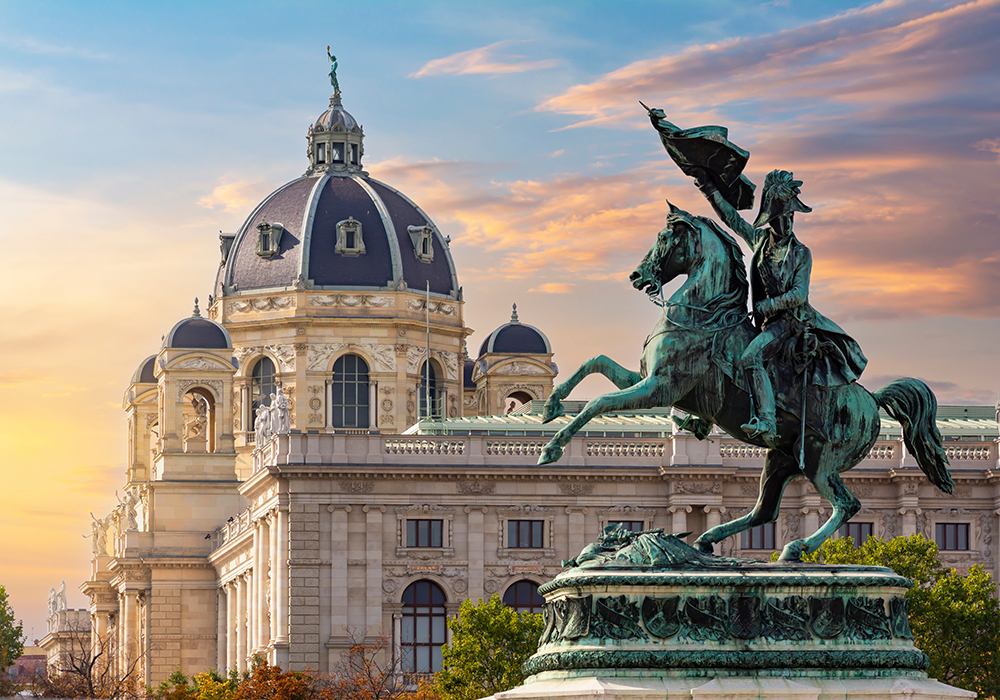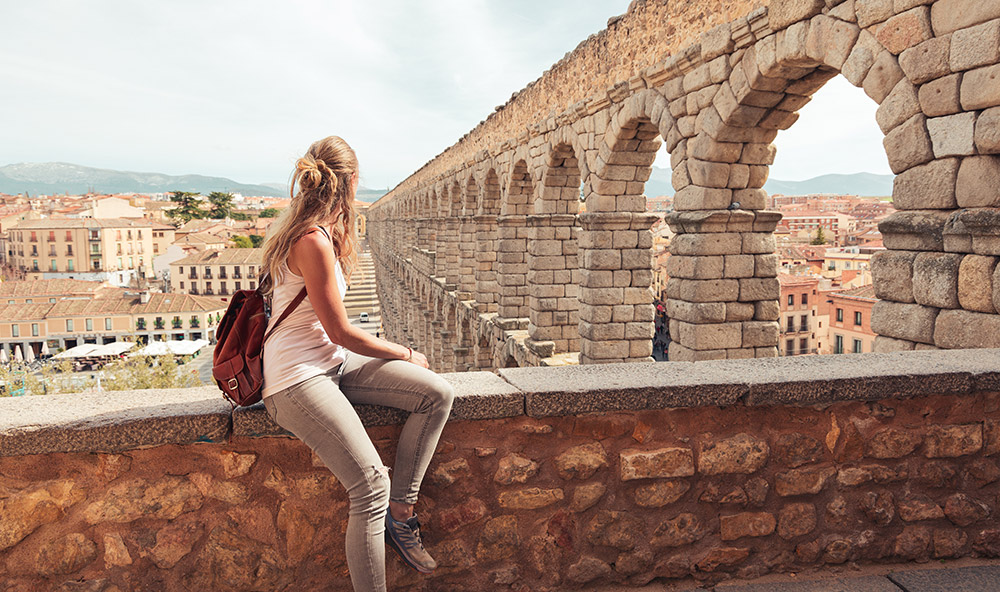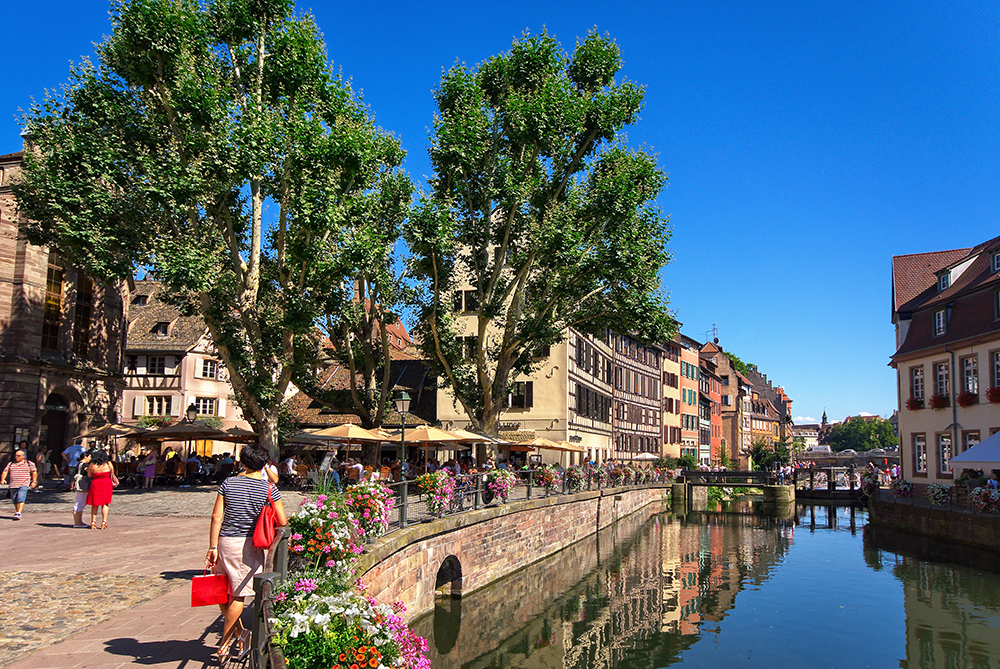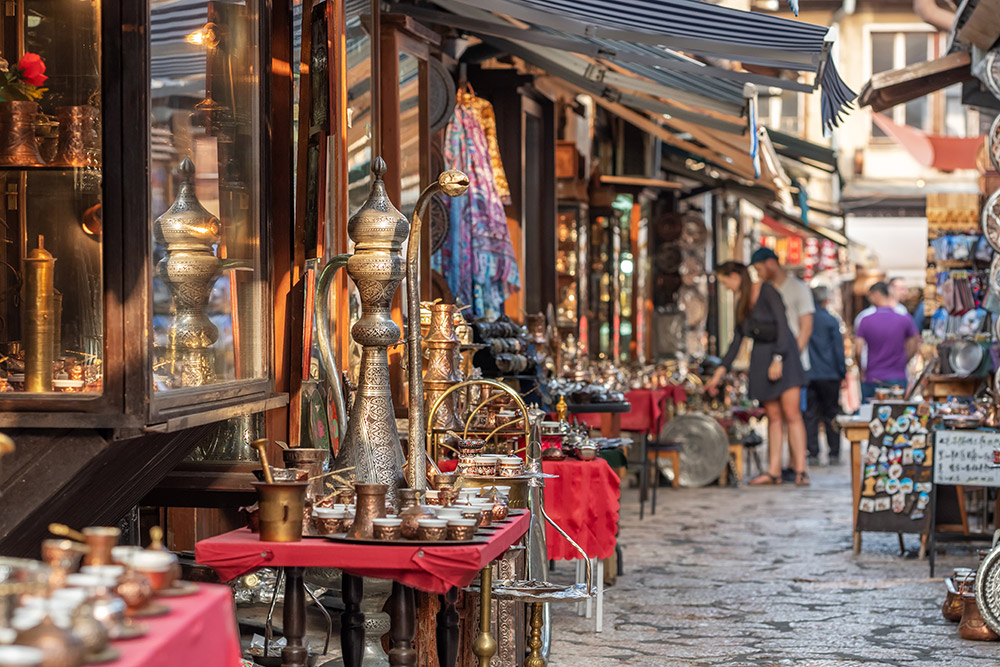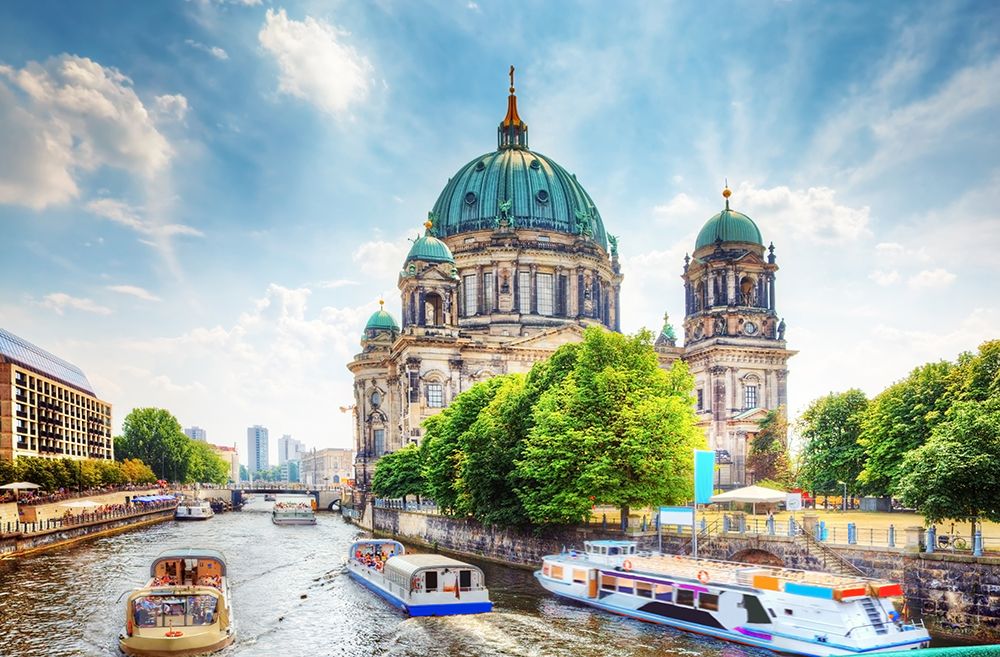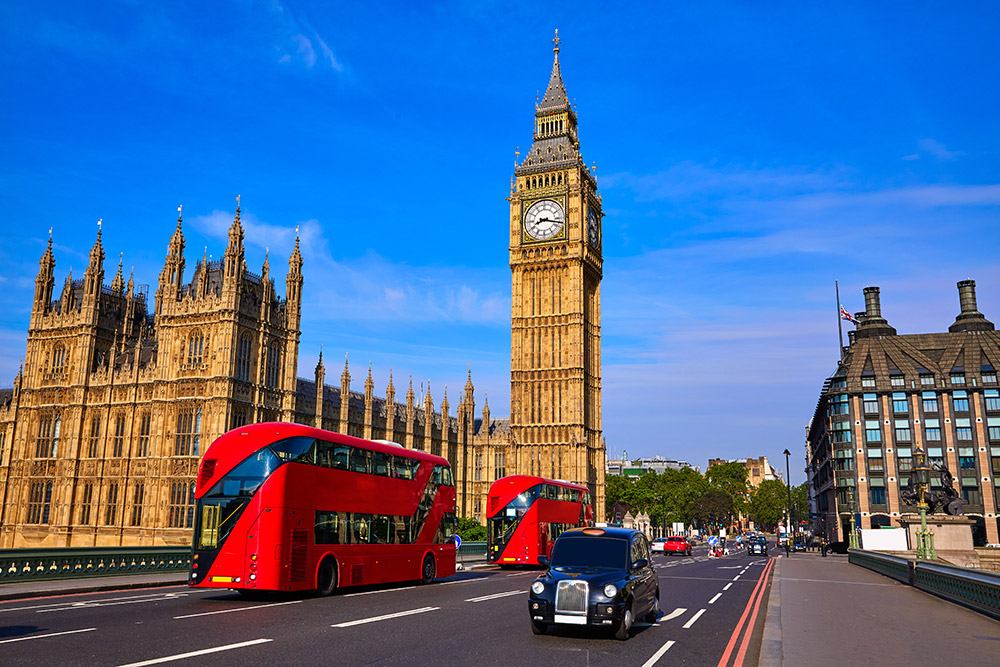Your Austrian adventure begins in the imperial capital, Vienna. Immerse yourself in the city’s grandeur by visiting the Leopold Museum, home to an impressive collection of modern Austrian art. Explore the opulent former imperial residence, the Hofburg Palace, and indulge in a decadent pastry at the historic Demel café. Marvel at the Gothic architecture of St. Stephen’s Cathedral before delving into the renowned Albertina Museum. Be sure to visit the magnificent Belvedere Palace and the Hundertwasserhaus, a whimsical building now housing the Hundertwasserhaus Museum, and enjoy the views from the iconic Riesenrad Ferris wheel. No trip to Vienna would be complete without visiting the grand Schönbrunn Palace, a UNESCO World Heritage Site.
Popular itinerary for a trip to Austria with a focus on culture and art:
From Vienna, travel to the charming city of Eisenstadt to visit the elegant Schloss Esterhazy, a testament to the power and luxury of the Esterhazy dynasty. In Graz, ascend Schlossberg for panoramic city views and explore its historical landmarks. Continue on to Klagenfurt, where you can marvel at the miniature world of Minimundus before discovering the beauty of Schloss Stein Castle.
Travel through a breathtaking Alpine pass to Zell am See, a postcard-perfect town nestled amidst stunning mountains. Next, head to the elegant city of Innsbruck. From there, take a detour to Kehlsteinhaus (Eagle’s Nest) before reaching Salzburg, Mozart’s birthplace. Visit the impressive Hohensalzburg Fortress and wander the charming streets of the old city.
Follow the Danube River to Linz before reaching Melk, where you can explore the treasure-filled Melk Abbey. Finally, tour the picturesque Wachau Valley, centered around the town of Dürnstein. Learn about Richard the Lionheart’s captivity in the imposing fortress above the town.
This 10-day itinerary covers approximately 870 miles. Please note that some routes and sites mentioned may be closed during the winter season.
Day 1: Vienna
Vienna offers a wide variety of cultural, historical, and artistic attractions. Start the morning with a short walk along the city’s iconic Ringstraße, “Ring Road,” and admire the magnificent City Hall and Parliament building. A short walk away is Maria Theresien Square, where a statue of the Empress stands prominently in the center. The Leopold Museum is nearby, renowned for its collection of Austrian art from the late 19th century to the present day, with a focus on Viennese Modernism. The museum includes works by Gustav Klimt, Egon Schiele, and other prominent artists and offers a comprehensive and extensive overview of Austria’s cultural heritage.
Towards lunchtime, cross through the Äußeres Burgtor gate to the imperial courtyard of Hofburg Palace. This former imperial residence houses a wealth of attractions within its extensive grounds, including the Sisi Museum, which displays the treasures and writings of Empress Elisabeth, affectionately known as Sisi, and the Imperial Treasury Museum, which showcases the opulent treasures of the Habsburg dynasty, including royal artifacts, crowns, jewelry, and historical treasures telling the story of imperial grandeur.
From here, continue to the Spanish Riding School and then explore Kohlmarkt, a street lined with luxury shops and cafés, including the iconic Demel coffeehouse, renowned for its exquisite pastries and coffee traditions dating back to the late 18th century. Next, proceed to the expansive Graben Street, where the ornate Plague Column (Wiener Pestsäule) stands tall, and continue to St. Stephen’s Cathedral, a timeless landmark that has dominated Vienna’s skyline since the 12th century. This is Gothic cathedral is adorned with stunning architecture, colorful stained glass windows, and ornate altars. You can climb to the observation deck for a panoramic view. The cathedral area is brimming with shops, malls, cafes, and restaurants.
Continue along Dorotheergasse to the Albertina Museum, which houses a vast collection of graphic art. The museum’s diverse exhibitions and galleries showcase masterpieces, allowing visitors to survey centuries of artistic evolution in the field of graphics, prints, and etchings by many artists, including Dürer, Rembrandt, Michelangelo, Picasso, Schiele, Klimt, Kokoschka, and Kirchner.
A short distance away is the Vienna State Opera, which was built in the 19th century and epitomizes artistic excellence and architectural beauty. In the evening, enjoy a local concert, tickets for which can be purchased from vendors scattered around the city and in Maria Theresa Square.
Spend the night in Vienna.
Day 2: Vienna
In the morning, visit the Belvedere Palace, a masterpiece of Baroque design. The Upper Belvedere houses an extensive collection of Austrian art, while the Lower Belvedere hosts temporary exhibitions and offers a glimpse into the luxurious lifestyle of the Habsburg monarchy. The beautifully landscaped gardens connecting the two palaces feature fountains, sculptures, and stunning views of Vienna. The Belvedere is not only an architectural gem but also a cultural treasure showcasing the splendor of Austria’s history and artistic heritage, Vienna in particular.

Enter the Upper Palace and explore its highlight – a collection of paintings by Gustav Klimt, including masterpieces such as “The Kiss” and “Judith.” This rich display of Klimt’s Golden Age complements a wide range of Austrian art from the 19th and 20th centuries, featuring works by artists such as Egon Schiele and Oskar Kokoschka. Amidst the magnificent Baroque architecture and lavish interiors, visit the opulent living quarters of Prince Eugene of Savoy (1663–1736), a renowned military leader and statesman of the Habsburg Empire. The prince was also an art collector and a prominent patron of the artists of his day. He commissioned the construction of the palace as a summer residence.
After lunch, visit the museum of the vibrant artist Friedensreich Hundertwasser. The museum showcases a vast collection of his works, which are characterized by bold colors and organic forms. Gain insights into his environmental messages and philosophy of living in harmony with nature. The museum takes you on a journey through his life, artistic legacy, and impact on Austrian and international culture.
At the end of the museum tour, escape the city bustle and unwind in the sprawling Prater Park. Its vast green spaces offer a haven for picnics, leisurely walks, or bike rides along paths steeped in history. Take a ride on the iconic Wiener Riesenrad Ferris wheel, built in 1897, and enjoy breathtaking panoramic views of Vienna from the comfort of its train car-like gondolas, reaching heights of up to 220 feet.
In the evening, immerse yourself in the rich musical heritage of Vienna with a Baroque music concert. Held almost every night at the Wiener Börsensäle, it’s the perfect way to bid farewell to Austria’s enchanting capital city.
Spend the night in Vienna.
Day 3: Vienna to Eisenstadt
Start the day with a visit to the Schloss Schönbrunn Palace, a UNESCO World Heritage Site, and one of Europe’s most opulent palaces. Built in the 17th century, it served as the summer residence for Habsburg monarchs, including Empress Maria Theresa. Admire its exquisite Baroque architecture, manicured gardens, and lavishly decorated interiors. Explore its magnificent halls and chambers, including the Grand Gallery and the Hall of Mirrors, each reflecting the splendor of the Habsburg era. The sprawling gardens, embellished with sculptures and fountains, provide a picturesque backdrop to the palace, also home to the world’s oldest zoo. Panoramic views of the garden and Vienna city can be enjoyed from the Gloriette, crowning the hill opposite the palace.
Following your visit to Schönbrunn Palace, head along scenic Highway 3A for about 31 miles until you reach the charming town of Eisenstadt. Your first stop is Schloss Esterházy, a magnificent palace that embodies the legacy of the Esterházy family. This aristocratic dynasty, with roots tracing back to the Middle Ages, held significant power in the Kingdom of Hungary and the Habsburg Empire. The Esterházy family rose to prominence during the Renaissance, becoming one of Central Europe’s wealthiest and most influential noble families. A pivotal figure was Prince Nikolaus Esterházy (1714–1790), a renowned patron of the arts and an avid supporter of classical music. Under his patronage, composers like Joseph Haydn found fertile ground for their talents to flourish.

The palace, one of Central Europe’s most distinguished aristocratic residences, was originally constructed in the late 13th century and subsequently expanded and refurbished in Baroque and Rococo styles. It boasts opulent interiors adorned with exquisite furnishings and lavish halls. Admire the grandeur of the Joseph Haydn Hall, named after the renowned composer who served as Kapellmeister (music director) for the Esterházy family for over 30 years. Marvel at the authentic exhibitions showcasing masterpieces of art, furnishings, ornaments, and decorative arts. These displays offer a glimpse into the refined lifestyle and artistic sensibilities of the Esterházy family. Outside the palace, step into the tranquility of the meticulously landscaped gardens, lush greenery, fountains, and sculptures.
Today, Schloss Esterházy serves as a vibrant cultural center, where history, art, and music come together. Throughout the year, the palace comes alive with a variety of events, including concerts, exhibitions, and performances. Be sure to check the schedule for any events that might coincide with your visit.
Spend the night in Eisenstadt.
Day 4: Eisenstadt to Graz
In the morning, embark on a scenic drive from Eisenstadt, taking Highways 31S, 4S, and 2A for approximately 106 miles to the charming city of Graz.
Nestled along the Mur River and at the foot of a majestic fortress, Graz radiates an enchanting blend of history, culture, and modern flair. Once considered a cultural hub of Europe, this charming city has earned designation as a UNESCO World Heritage Site.
Step into the heart of Graz’s Old Town, which boasts no fewer than 1,000 historic buildings dating back to the 14th to the 17th centuries in various styles, from Gothic to Baroque. These are interspersed with ultra-modern structures, creating a striking architectural contrast. Spend the rest of the day strolling through the streets of the Old Town, where you’ll encounter the unique architecture of the Kunsthaus Graz museum, often referred to as the “Friendly Alien.” Its whimsical, organic design resembling a marine creature is captivating both day and night with its unique light display.
Ascend to the imposing Schlossberg Fortress, perched atop a 394-foot cliff. This formidable structure, transformed into a public park in the mid-19th century, offers breathtaking panoramic views of Graz from its tower, adorned with a 16-foot diameter clock. Discover Graz’s 850-year history at the Castle Museum where you’ll learn about the city’s evolution from its strategic Roman-era crossroads to its current status as a vibrant cultural hub.
Explore the city’s hidden depths through the network of underground tunnels, largely excavated during World War II. These subterranean passages, featuring vaulted chambers and a cannon hall, provide unique vantage points of the city below.
Spend the night in Graz.
Day 5: Graz to Klagenfurt am Wörthersee to Villach
Depart Graz and take a scenic drive along Highway 2A for approximately 81 miles to the charming city of Klagenfurt am Wörthersee.
Nestled on the shores of Lake Wörthersee, Klagenfurt am Wörthersee offers a captivating blend of Renaissance elegance and modern vibrancy. Explore the city’s delightful streets and landmarks, including the grand Landhaus, a Renaissance masterpiece that serves as the seat of the Carinthian state government; a monument commemorating Empress Maria Theresa, a revered figure in Austrian history; and the impressive Spanheimer Fountain, honoring the memory of Duke Bernhard von Spanheim, the city’s founder. Don’t miss the mythical Lindwurm dragon at the iconic Lindwurm Dragon Fountain.

Step into the enchanting world of Minimundus Miniature Park, where iconic landmarks, renowned structures, and fascinating exhibits come to life in miniature. Explore a vast collection of models, crafted with meticulous detail, representing architectural wonders from around the globe, all presented at a scale of 1:25.
Later in the day, continue your journey along Highway 2A for another 25 miles to the picturesque city of Villach to spend the night.
Day 6: Villach to Schloss Stein, Grossglockner, and Zell am See
Embark on a scenic drive along Highway 100 for approximately 53 miles to the enchanting Schloss Stein.
This magnificent 12th century Renaissance-Gothic castle, perched atop a hill overlooking the Drava River Valley, offers breathtaking panoramic views of the surrounding landscape. Historically, Schloss Stein served as an important defensive stronghold. Its wooden bridge, designed to be burned in the event of an attack, highlights the castle’s strategic significance. Visitors can explore its well-preserved halls, chambers, and courtyards.
In the afternoon, return to Highway 100 and travel approximately 16 miles to the junction with Highway 107 until you reach Grossglockner Alpine Road, a winding mountain pass that traverses the majestic Hohe (High) Tauern Alps. This scenic route, open only during the summer months, reaches an elevation of approximately 8,200 feet.
As you ascend the Grossglockner Alpine Road, prepare to be awestruck by the breathtaking panoramas that unfold before you. Snow-capped peaks, lush valleys, and cascading waterfalls create a landscape of stunning beauty.
Upon descending from the Grossglockner Alpine Road, you’ll arrive in Zell am See. Nestled on the shores of Lake Zell, this picturesque town offers a tranquil retreat amidst stunning alpine scenery. Founded by monks in the 8th century, its name, derived from the Latin “Cella in Bisoncia,” hints at its origins as a humble cell within a larger monastery.
Wander through its charming streets, lined with traditional Austrian houses and inviting shops, and stroll along the tranquil shores of Lake Zell.
Spend the night in Zell am See.
Day 7: From Zell am See to Innsbruck
Journey along picturesque Highways 165 and 169, covering approximately 90 miles, until you reach Innsbruck, nestled in the heart of the Tyrolean Alps. Set within the stunning Inn Valley, Innsbruck is embraced by towering mountains soaring to heights ranging from 7218 to 8858 feet. Explore the city’s medieval heritage at the Turmwachter, a watchtower dating back centuries. Ascend its 133 steps to reach the observation deck, offering panoramic vistas of the city and its majestic surroundings, much like the watchmen and fire lookouts did over 400 years ago.
Adjacent to the tower lie the historic Old Town Hall and the iconic Golden Roof (Golden Dachl), adorned with approximately 2,600 gold-plated copper shingles. Dating back to around 1500, this architectural marvel showcases 12 stunning reliefs of Moorish dancers. Nestled beside the Golden Roof, the Old Town Hall stands as a testament to Innsbruck’s rich history. Its architectural beauty and historical significance are not to be missed.
Continue your exploration to the grand St. James Cathedral, a Baroque masterpiece dedicated in 1724, located amidst the quaint alleys of the old town.
Visit the Tyrolean State Museum, which houses collections on a variety of subjects, from early history and art history to cartography and daily life. The museum also features violins designed and crafted by the renowned Tyrolean luthier Jakob Stainer, whose instruments were as sought after as those of Stradivarius. Enjoy works by artists such as Lucas Cranach the Elder, Rembrandt, Franz Defregger, Albin Egger-Lienz, and Max Weiler.

Spend the night in Innsbruck.
Day 8: Innsbruck to Salzburg via Kehlsteinhaus
Head along Highways 45E, 178, and 305 for approximately 100 miles, following the scenic route, to the renowned Kehlsteinhaus, also known as the “Eagle’s Nest.” Perched atop the Bavarian Alps, the Eagle’s Nest was originally constructed as a teahouse to commemorate Adolf Hitler’s 50th birthday. The Kehlsteinhaus is both a historical monument and an architectural wonder, offering breathtaking views of the surrounding mountains and serving as a poignant reminder of its dark past during World War II. Today, the site attracts tourists who come to witness its stunning panoramas and reflect on its somber history.
After exploring Kehlsteinhaus, descend towards Highway 1A for about 18 miles until you reach the enchanting city of Salzburg. Salzburg retains the charm of its ecclesiastical past as a former city-state within the Holy Roman Empire. Its skyline is adorned with spires and domes, while its narrow streets and bustling markets evoke a sense of timeless elegance. Salzburg holds a special place in the history of music, being the birthplace of the legendary composer Wolfgang Amadeus Mozart in January 1756, whose early works were undoubtedly influenced by the city’s ambiance.
Explore Salzburg Cathedral, a magnificent example of Baroque architecture with hints of Rococo embellishments, and don’t miss the DomQuartier Museum, a must-visit for enthusiasts of Baroque art and design. Here, you’ll discover a fascinating array of decorative elements, from intricately adorned items to exquisite furniture, candelabras, and artworks, providing insight into Salzburg’s rich artistic heritage from the 17th and 18th centuries.
Conclude your day in the Old Town, savoring its diverse culinary offerings, and charming cafes as you immerse yourself in Salzburg’s timeless atmosphere.
Spend the night in Salzburg.
Day 9: From Salzburg to Linz
Begin your day with a trip to Hohensalzburg Castle, a fortress that has towered over the city for nearly a millennium. The castle has undergone expansions and fortifications over the centuries, offering full protection to its inhabitants. Today, it serves as a museum of the archbishops and boasts stunning views of both the cityscape and the majestic Alps. Ascend to the castle either by foot or via the funicular for a memorable experience.
After visiting the castle, travel approximately 80 miles along Highway 1A to Linz, Austria’s third-largest city. Although primarily an industrial city, Linz boasts a charming old town center that stretches along a central thoroughfare spanning about a mile, extending from Nibelungen Bridge to the theater adjacent to the train station. Dominating the impressive main square is the “Trinity” Column, a towering white marble monument erected in 1716 as thanksgiving for the city’s survival during the plague. At the top of the column stands Santa Maria Immaculata.

Marvel at the Feichtinger House, distinguished by its upper facade adorned with 19 bells that play musical pieces by Austrian composers. Each musical segment lasts four minutes and is played three times a day. Take a leisurely stroll to the old cathedral, a Baroque masterpiece constructed in the 17th century. During Mozart’s stay in Linz in 1783, for the installation of the new organ in the Linz Cathedral, he rapidly composed his 36th Symphony and conducted its premiere. Visit the front of the house where he stayed and listen to an excerpt from the symphony on an audio system installed there.
In the evening, explore Landstraße, a bustling shopping district that beckons with its array of boutiques, three malls, and flagship stores.
Spend the night in Linz.
Day 10: From Linz to Melk
Head towards the town of Melk, approximately 62 miles from Linz on Highway 1A. Upon arrival, park at the Melk Abbey parking lot. This Benedictine monastery was founded in 1089 by Leopold II, Margrave of Austria, and quickly became one of the most important cultural and educational centers in the region. Perched majestically atop a hill, the colossal Baroque-style structure commands a breathtaking view of the Danube River. Entry is by guided tour only, which covers the monastery’s treasures, its impressive rooms with ceiling and wall paintings, and the ancient library containing over 90,000 volumes, many from the medieval period. Throughout the 18th and 19th centuries, the monastery played a pivotal role in Austria’s cultural and intellectual milieu, hosting luminaries such as Goethe, Mozart, and Haydn. Today, the abbey is a UNESCO World Heritage Site, welcoming visitors year-round.
Following your exploration of the abbey, descend along a winding path to the quaint town below, brimming with vibrant shops, cozy cafes, and inviting restaurants.
Continue your journey by driving through the scenic Wachau Valley. After an approximate 18-mile drive along Highway 3, tracing the north bank of the Danube River, you’ll reach the picturesque town of Dürnstein. Renowned for its historic castle, where Richard the Lionheart, the English king, was famously held captive in the late 12th century, Dürnstein exudes timeless charm. The ascent to the castle, offering stunning views, is accessible only by footpath.
Dürnstein is a small historic town with colorful flower-adorned houses and a lively shopping street featuring local shops, cafes, and wine taverns offering the region’s renowned wines, particularly the Grüner Veltliner and Riesling varieties. The town is also famous for its apricot delicacies, with orchards abundant in the Wachau Valley, offering everything from fresh fruit to jams and liqueurs.
After visiting Dürnstein, return to Vienna via Highways 5S and 22A, covering a distance of approximately 50 miles.


